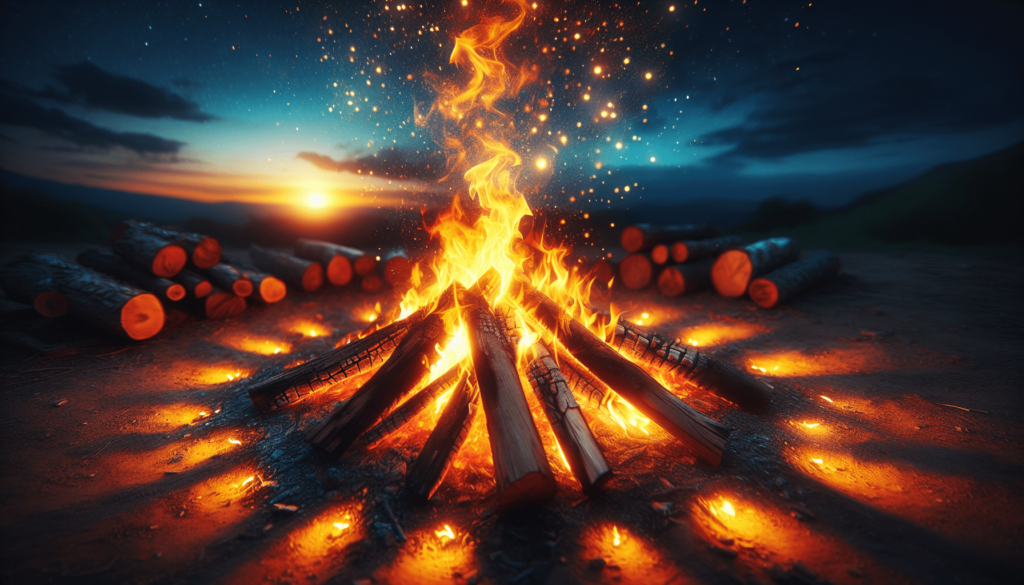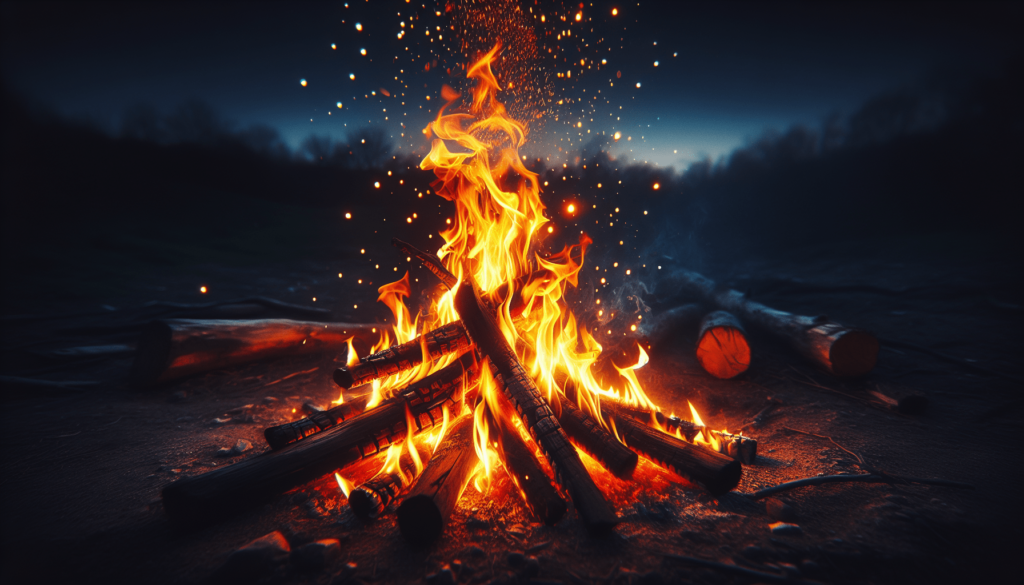Have you ever sat around a cozy campfire or in front of a crackling fireplace, mesmerized by the dancing flames and the comforting heat? If so, you’ve probably found yourself wondering, “What is the name for burning wood?” This question can evoke vivid memories of warmth and the smell of smoke, punctuated by moments of appreciating nature’s simple pleasures.

Understanding the Science Behind Burning Wood
Before diving into terminology, let’s get a handle on what’s actually happening when wood burns. Wood combustion is not just a beautiful spectacle but a fascinating chemical process.
The Chemistry of Combustion
At its core, burning wood is a chemical reaction known as combustion. This occurs when wood, comprising mostly carbon and hydrogen, reacts with oxygen in the air, releasing heat and light in the form of flames. It’s interesting to note how this simple act of lighting a fire can convert a solid piece of wood into various by-products.
The Phases of Burning Wood
The burning of wood isn’t something that just happens all at once. It’s a process that unfolds in stages:
- Evaporation: Initially, heat evaporates moisture within the wood.
- Ignition: The remaining material reaches a temperature where it begins to emit flammable gases.
- Combustion: These gases burn, producing energy, light, and ash.
These stages explain why wood first crackles and smokes before settling into a steady burn.
Pyrolysis: The Art of Decomposition
A key term often associated with burning wood is pyrolysis. It’s a complex word that might sound like a sneeze, yet it plays a critical role in the combustion process.
What is Pyrolysis?
Pyrolysis is the thermal decomposition of wood when it’s exposed to high temperatures in the absence of oxygen. During this process, wood breaks down into simpler organic substances, releasing gases and leaving behind a charred residue.
Pyrolytic Products
The by-products of pyrolysis include syngas (a mix of hydrogen and carbon monoxide), bio-oil, and char. These by-products can be quite useful, serving as potential energy sources themselves. Isn’t it intriguing how a seemingly simple act like burning wood can unlock a wealth of chemical reactions and materials?
The Vocabulary of Wood Combustion
Knowing the scientific principles of burning wood is a great start, but what about the specific names and terms used to describe it? Let’s explore some of these terms to better understand the language surrounding this topic.
Incineration vs. Combustion
Two words often interchangeably used are ‘incineration’ and ‘combustion.’ However, they aren’t quite the same.
- Combustion is a broader term, encompassing all forms of burning, whether it’s a cozy log fire or a wildfire raging through a forest.
- Incineration generally refers to the controlled burning of waste to reduce its volume and destroy harmful materials.
Understanding the distinction is crucial, especially when discussing environmental impacts and energy production.
Kindling and Tinder
Before ignition, you often need small pieces of wood to start the fire. This is where the terms ‘kindling’ and ‘tinder’ come in.
- Kindling refers to the thin pieces of wood that catch fire easily and help fuel the fire.
- Tinder is even finer than kindling and includes things like dry leaves, paper, or small twigs.
Would a collective term for this be “fire starters,” perhaps? Whatever you call them, they’re essential players in getting a fire going.
Historical Context: From Campfires to Modern Incinerators
Burning wood is an ancient practice that has evolved significantly over time. Let’s take a stroll through the history of wood burning and explore its role in various cultures.
Primitive Beginnings
In prehistoric times, the act of burning wood was a groundbreaking discovery. Fire provided warmth, a means to cook food, and a protective barrier against predators. It’s amazing, really, how such a simple process could significantly alter human evolution and society.
Wood Burning in Industry
Fast forward to the Industrial Revolution, where wood burning became an essential energy source driving steam engines and heating homes. It was during this era that wood combustion started to shift toward more efficient and controlled methods.
Modern Wood Burning Techniques
Today, we see wood burning in various forms, like pellet stoves and efficient wood-burning appliances. These modern advancements aim to reduce emissions and improve heat efficiency, reflecting a growing awareness of environmental issues.

Environmental Implications of Burning Wood
While the act of burning wood has its place in history and culture, it’s essential to weigh its environmental impact. Like most things, it isn’t all warmth and nostalgia; there are tangible effects on the environment to consider.
Air Pollution
Combustion releases pollutants, including volatile organic compounds (VOCs) and particulate matter. These compounds can contribute to air quality issues and health problems. We don’t often think about this as we roast marshmallows, but perhaps we should.
Carbon Footprint – Sustainably Burning Wood
While burning wood releases carbon dioxide, the impact can be mitigated by sustainable practices. Sustainable wood harvesting and using efficient burning appliances can minimize the carbon footprint, making wood a relatively carbon-neutral fuel source.
Comparing Wood to Other Energy Sources
Table: Environmental Impact Comparison
| Energy Source | Carbon Emissions | Air Pollutants | Renewable |
|---|---|---|---|
| Wood (sustainable) | Moderate | Medium | Yes |
| Coal | High | High | No |
| Natural Gas | Lower | Low | No |
| Solar | None | None | Yes |
From this comparison, it’s clear that sustainably sourced wood holds potential as a more environmentally friendly energy source than fossil fuels.
The Cultural Significance of Burning Wood
Beyond its practical applications, burning wood holds cultural and symbolic meaning. Take a moment to reflect on its role in various traditions and customs.
Fire Rituals and Celebrations
Think about the significance of bonfires in celebrations like Guy Fawkes Night or cultural festivals such as Holi. Fire serves as a focal point for these events, providing light and setting the stage for community bonding.
Symbolism in Literature and Art
Fire and burning wood frequently appear as symbols in literature and art, representing transformation, enlightenment, or destruction. Classic novels and paintings often use fire as a powerful metaphor, giving weight to scenes and themes.
Practical Tips for Burning Wood Efficiently and Safely
When you’re ready to light that fire, be it in a grill, a campfire, or a cozy hearth, there’s an art to doing it well. Efficiency and safety should always be at the forefront of your mind.
Selecting the Right Wood
Not all wood is created equal. Hardwoods like oak and maple burn longer and produce more heat, while softwoods like pine ignite quickly but burn faster. Knowing which type of wood suits your needs can enhance your fire experience.
Building a Fire: Step-by-Step
To build an efficient and roaring fire, consider these steps:
- Arrange the Tinder: Create a small base of tinder.
- Lay the Kindling: Stack kindling in a crisscross pattern.
- Add the Logs: Place larger logs on top, leaving room for airflow.
- Light the Tinder: Ignite the tinder, and let the fire naturally progress.
A good fire takes patience, but with this method, you’ll be rewarded with glowing warmth and dancing flames.
Safety Precautions
While fire is captivating, it demands respect. Ensure your fire is contained, have water or a fire extinguisher nearby, and never leave it unattended. It’s not about evoking fear, but rather instilling a healthy respect for something that can quickly get out of control.
Looking to the Future: Innovations in Wood Combustion
As we move forward, the way we burn wood continues to evolve, thanks to technological advancements and innovative practices aimed at improving efficiency and sustainability.
Biomass and Advanced Combustion Systems
Modern biomass systems utilize wood and other organic materials to produce energy more cleanly and efficiently. Innovations like gasification turn wood into a gas that burns cleaner than traditional methods, offering a glimpse into the future of sustainable energy.
Environmental Regulations and Standards
Governments and environmental agencies are working to establish standards and regulations that promote cleaner wood-burning appliances. These efforts aim to lower emissions and drive technological advancements.
Concluding Thoughts
In wrapping up this conversation about burning wood, it’s clear just how multifaceted a topic it is. From its historical significance to its environmental implications and cultural resonance, burning wood is more than just an act of setting logs alight. It’s a dance of chemistry, tradition, and innovation that holds a special place in human life.
So, the next time you find yourself bundled up by a fire, you can appreciate the marvel of what’s happening a little more deeply. The name for burning wood might be simple—combustion—but the story behind it is anything but.

